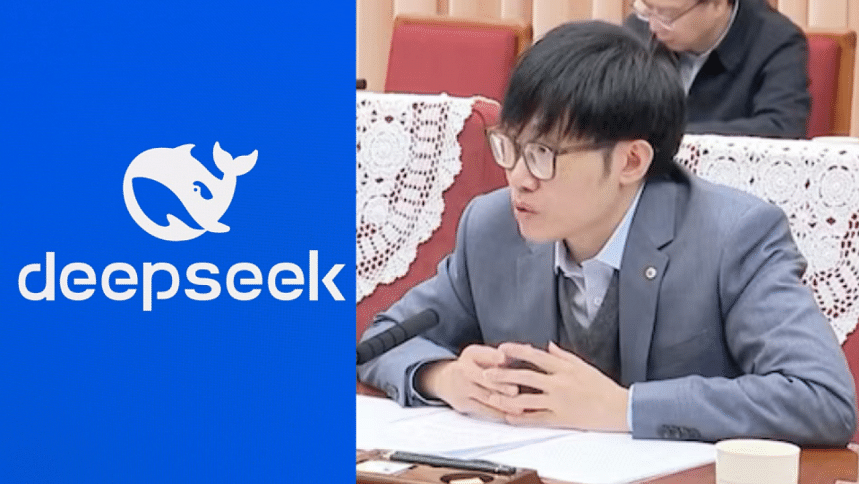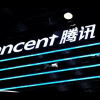Meet Liang Wenfeng, the founder of DeepSeek

Liang Wenfeng, the 39-year-old founder and CEO of Chinese AI startup DeepSeek, has emerged as a key figure in China's push to challenge US dominance in artificial intelligence.
Liang kept a low-profile for himself until he stepped into the public eye in January 2024, when he was invited to speak at a high-level symposium hosted by Chinese Premier Li Qiang, alongside senior academics and state-owned enterprise leaders.
But who is this elusive tech leader? Let's take a look at his background and work on AI so far.
From finance to AI innovation
Born in 1985 in Zhanjiang, Guangdong, Liang Wenfeng studied at Zhejiang University, earning a Bachelor of Engineering in Electric Information Engineering and a Master of Engineering in Information and Communication Engineering.
His career began in finance, where he co-founded High-Flyer Quant in 2015, a hedge fund that leveraged AI and machine learning for trading. The firm quickly gained recognition, winning the Golden Bull Fund Award in 2018 and growing into a ten-billion-yuan quant fund.
In 2019, Liang expanded his focus to AI, launching High-Flyer AI, a research arm dedicated to developing advanced algorithms and computing infrastructure. Over the next few years, High-Flyer AI invested heavily in building Fire-Flyer, a high-performance AI computing cluster.
By 2022, Fire-Flyer II, the second iteration of the cluster, was operating at 96% efficiency, completing over 1.35 million AI tasks and supporting research with idle computing power, as per the official website of High-Flyer.
The birth of DeepSeek
In 2023, Liang shifted his focus entirely to artificial general intelligence (AGI), founding DeepSeek with the goal of creating AI systems capable of outperforming humans in most tasks. Unlike many Chinese tech firms that focus on scaling existing innovations, DeepSeek concentrated on developing original, cutting-edge models. This approach paid off in January 2024 when the company released R1, a 671-billion-parameter AI model.
What made R1 stand out was its cost-efficiency. Developed using just 2,048 Nvidia H800 chips at a cost of $5.6 million, the model demonstrated that high-performance AI could be built without the billion-dollar budgets typically associated with such projects. DeepSeek also made R1 open source, allowing anyone to use or modify the technology—a decision that set it apart from competitors like OpenAI.
The release of R1 had an immediate global impact. DeepSeek's free AI assistant quickly climbed to the top of the US iOS App Store, surpassing OpenAI's ChatGPT. The news triggered a selloff in tech stocks, wiping over $1 trillion from the market, according to reports from Reuters and Bloomberg.
The power of open-source
Liang has been a vocal advocate for open-source AI, arguing that it fosters innovation and collaboration. In a 2023 interview with Chinese outlet Waves, he stated, "Even if OpenAI is closed-source, it cannot stop others from catching up. Open source is like a cultural practice, rather than a business practice. A company that does this will have soft power."
This philosophy has resonated with the global tech community, earning praise from figures like venture capitalist Marc Andreessen, who called R1 "one of the most amazing and impressive breakthroughs" he's ever seen, as per a report by Reuters.
Challenges and ambitions
Despite DeepSeek's success, Liang faces significant challenges. As per Reuters, US export controls on advanced AI chips have limited China's access to critical technology, creating hurdles for companies like DeepSeek. However, Liang remains focused on fostering original research in China.
"China's AI can't be in the position of following forever," he said in the 2023 interview. "The real gap between China and the US is the difference between originality and imitation."
Liang's vision for DeepSeek is ambitious: to achieve AGI, a long-term goal that requires solving some of the most complex problems in AI. The company's team, composed of graduates and PhD students from top Chinese universities, is dedicated to this mission.
Looking ahead
Liang Wenfeng's rise reflects China's growing ambitions in AI, but it also highlights the challenges the country faces in competing with US tech giants. As DeepSeek continues to develop new models, the global AI landscape is likely to see increased competition and innovation.
For now, Liang and his team are key players in the race for AI supremacy. Whether DeepSeek can sustain its momentum remains to be seen, but one thing is clear: Liang Wenfeng has positioned himself and his company at the forefront of China's AI revolution.

 For all latest news, follow The Daily Star's Google News channel.
For all latest news, follow The Daily Star's Google News channel. 







Comments